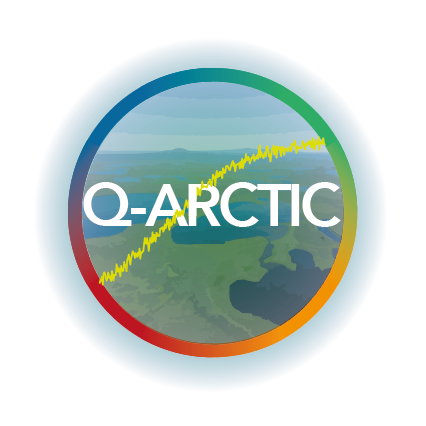Motivation
Arctic permafrost has been identified as a critical element in the global climate system, as the vast amount of stored carbon is at high risk of being released under climate change. While climate change impacts hydrology, topography and biology and vice versa, shifts in such factors lead to highly complex feedbacks between biogeochemical and biogeophysical processes. These feedback mechanisms are only rudimentarily represented in current Earth System Models, in particular due to a scaling gap between physical processes and the model grid.
Q-ARCTIC will establish a next generation coupled land-surface model. The aim is to explicitly resolve highest resolution landscape features and disturbance processes in the Arctic: Model development will be informed by novel remote sensing methodologies linking landscape characteristics and change potential at an exceptional level of detail. Interdisciplinary observations at multiple spatiotemporal scales will deliver novel insight into permafrost carbon cycle processes.
All components are essential for our objective to generate an unprecedented process-based hindcast of glacial permafrost carbon state and projection of permafrost sustainability under future scenarios with a focus on abrupt changes.
Work Package 1: Local-Scale Process Understanding

In this work package, we aim to statistically upscale the microsite landscape elements that form the Arctic permafrost landscapes at very high spatial resolution (1-10 m). We will inform our understanding via:
- Observational studies, targeting
- links between permafrost ecosystem structure
- level of disturbance
- carbon exchange processes
- Remote sensing activities in order to
- investigate vulnerability to future degradation
- support upscaling activities
Based on these findings, we will develop and apply statistical upscaling methods and machine-learning techniques that connect highly variable processes and surface characteristics to the landscape scale of few kilometers.

Work Package 2: Landscape-Scale Process Integration

We will assimilate pan-Arctic in-situ observational databases by merging datasets provided by an extensive network of international collaborators. To close important gaps regarding the role of open water bodies, a landscape-scale observatory will be set up, featuring innovative stationary and mobile platforms to monitor effective flux patterns in a heterogeneous Arctic landscape.
The obtained datasets will be instrumental for process model calibration and evaluation at the landscape scale. Remote sensing work will generate pan-Arctic datasets of current trends to support an operation of Earth System models at very high spatial resolution (few km). We will ingest this information to develop a next-generation process-based land-surface scheme as a part of the high resolution Earth System model ICON-ESM. Such setup will facilitate an unprecedented process-based coupling between ecosystem characteristics and environmental forcings. For the first time we will resolve the impact of hydrologic disturbance on Arctic permafrost carbon cycle processes.

Work Package 3: Past hindcasts and future projections of permafrost sustainability

Using the new high-resolution land-surface scheme developed within Q-ARCTIC, we will apply the ICON-ESM to simulate
- glacial changes in land carbon stocks and their sensitivity to climate change
- future climate and biogeochemistry changes based on a set of future scenarios, with a particular focus on overshoot trajectories.
Assimilating all the information gathered by the two previous work packages, this work package addresses the overall objectives of Q-ARCTIC, evaluating a role of the Arctic permafrost carbon pool as tipping element in the Earth System at an unprecedented level of detail. Our innovative data assimilation scheme bridges the gap between finescale processes and the ESM resolution, effectively maximizing the use of observational data. It will break new ground towards understanding how different future climate scenarios may change the face of the Arctic and how significantly permafrost carbon feedback will amplify future climate change.





